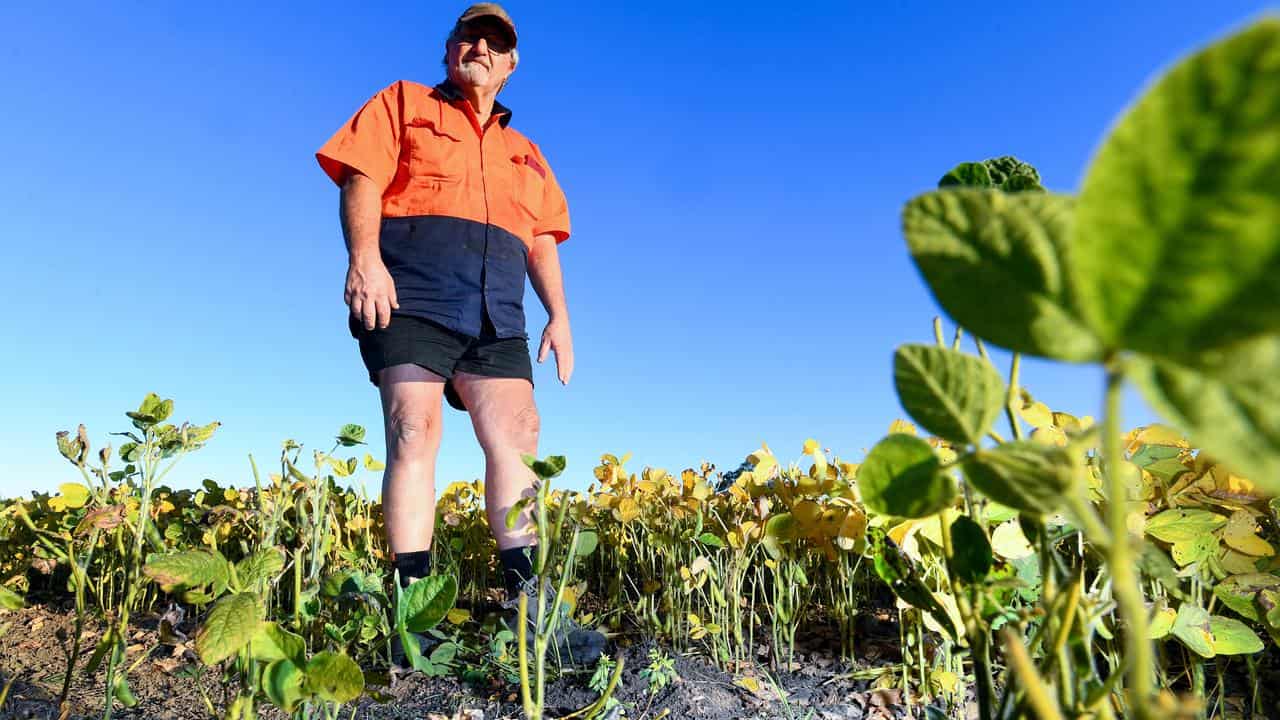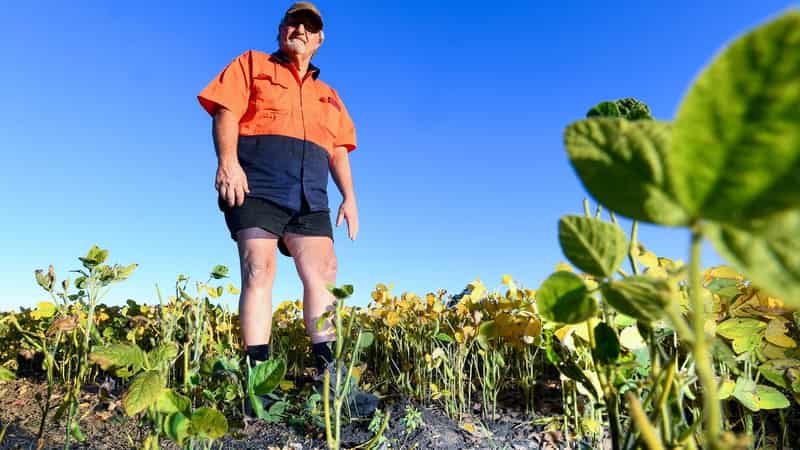
Gold Coast cane grower Larry Spann was lying on his side fixing farm machinery when he felt the intense burn of the first bite.
Within seconds his body was covered in imported red fire ants surging out of a nest he hadn't seen, in angry defence of their queen.
In all, he copped 40 bites that day and it was months before he was right again.
"I was half way through pulling a jet out on the planter and next minute, bang, there were fire ants from my knees right up to my shoulders.
"It was a severe burning sensation ... it took nearly two and half months before the welts were completely gone and the itch was gone."
Mr Spann is sure most Australians have no idea what they stand to lose if the nation fails to eradicate one of the world's worst super pests.
He points to Texas, where they are so prolific some grazing land is now useless for rearing cattle. Where people sometimes die from anaphylactic shock after being bitten. Where kids can't play in their yards and camping is out.
And he shudders to think about the toll on native species if the ants take hold beyond Queensland's southeast.
"Nobody really understands and I reckon the public should see some of the videos they've shown us of just the total desolation. Nothing survives when they get hold. Nothing."
Having lived with fire ants for well over a decade, Mr Spann and son Ben are troubled but not surprised by a review that found the national eradication plan will fail without an urgent gear shift and far more money.
Containment won't even be possible under the scope and budget of the existing $411 million, 10-year blueprint.
The panel of experts who conducted the review have called for a radical change of approach if Australia is to avoid profound consequences for the economy, health, the environment and people's lifestyle.
Its chair and former Australian Inspector-General of Biosecurity Helen Scott-Orr reported to government two years ago but the findings have only just been released.
She's also convinced Australians don't fully grasp what's on the line if eradication fails.
Personally, it could forever determine whether they can sit unmolested by the beach or in a park, or enjoy their own backyards.
At the national level, it could ravage the economy. Especially if they reach the Murray-Darling Basin where countless waterways will give the rafting pest a fast and free ride to NSW, Victoria and South Australia.
Rafting is one of the invader's best tricks. Thousands of them lock their bodies tightly together, trapping air bubbles to stay afloat while they wait to be deposited somewhere new.
Colonies can survive for weeks, with the multi-layered rafts strong enough to keep rescued queens and their eggs, larvae and pupae safe and dry.
The ants have already been found once at Tarome, behind the Gold Coast, near the upper reaches of Dalrymple Creek - a tributary of the Condamine that flows into the Murray-Darling system.
Dr Scott-Orr is also anxious about the ant getting into the fertile soils of Queensland's Darling Downs.
There was a scramble there in recent days after two nests were found near Toowoomba, the first detection on the western side of the Great Dividing Range. It's believed they might have come in with soil or mulch moved from elsewhere.
Meanwhile, the ants are also creeping closer to NSW's flood prone Northern Rivers. Last month, an infestation was found at a Gold Coast school 14km from the border as the crow flies, the most southerly discovery so far.
"I would imagine it's highly likely they are right at the border or over it by now. It's even more urgent now to be applying precautionary, preventive measures," Dr Scott-Orr says.
The bad news is the whole of Australia is suitable habitat for the South American super-pest first detected in Brisbane in 2001.
The only possible exceptions are Tasmania's high country and the Snowy Mountains. But as the climate changes, even those pockets might not be safe.
In the two decades or so since the invader reared its head, Australian governments have committed $778.4 million to deal with it, including $411.4 million under the current 10-year plan out to 2027.
Dr Scott-Orr says there's no doubt those efforts have slowed the ant's spread but the steady creep has not stopped and the review provides a frank assessment of some fundamental failures.
It says delays in planning, funding approvals and scaling up operations meant broadscale control efforts only began in earnest in 2018 - three years after the estimated extent of the ants was mapped.
"By then (fire ants) were already beyond the planned and budgeted treatment boundary, which surrounded 480,000 hectares in 2017," the review says.
While the national program has so far contained the ants to Queensland's southeast, largely through repeated rounds of aerial broadscale treatment, it hadn't stopped them spreading and expanding the control area to 750,000 hectares at the time the report was written in 2021.
So what needs to happen now to avoid the kind of entrenched problem that costs the US economy billions yearly, including never-ending suppression programs.
Is eradication in Australia still possible?
Dr Scott-Orr says it is but urgent change is needed.
She says the war must involve every level of government, every Australian and every industry that disrupts the landscape, with the development boom in Queensland's southeast a perfect scenario to demonstrate why.
"Every time they turn over land for a new development it's like saying 'hello here's a motel for the ants' and they fly in and set up a nest.
"So you've got to involve land developers in the process of applying (chemical treatments) maybe when they first turn the land over and then it's only about every six months (after that)."
The same thing has to happen with councils. As they tend verges and parks, they should be applying a low risk chemical that inhibits ant reproduction.
Residents also need to understand what they're gambling with when they ignore warning signs about moving soil and other organics in areas where ants are present.
There's no doubt winning the war won't be cheap.
The review recommends ongoing eradication before the 2032 Brisbane Olympics, something that could cost $300 million a year but mitigate potential annual losses of $2 billion if the pest is allowed to spread unchecked.
"Unless you opt for eradication you are condemned to an endless gruelling battle you are always in danger of losing," Dr Scott-Orr says.
The eradication program is co-funded by the Commonwealth and all state and territory governments because they understand it's a national threat.
The Queensland government says a new response plan and request for ongoing funding has been developed and endorsed by the program's steering committee.
Federal, state and territory agriculture ministers are due to consider it shortly.









